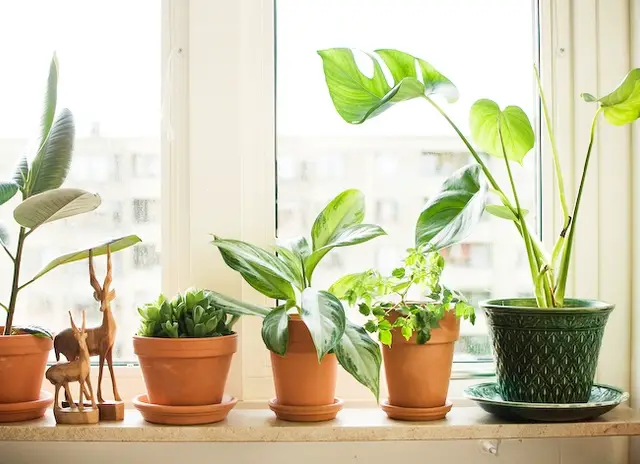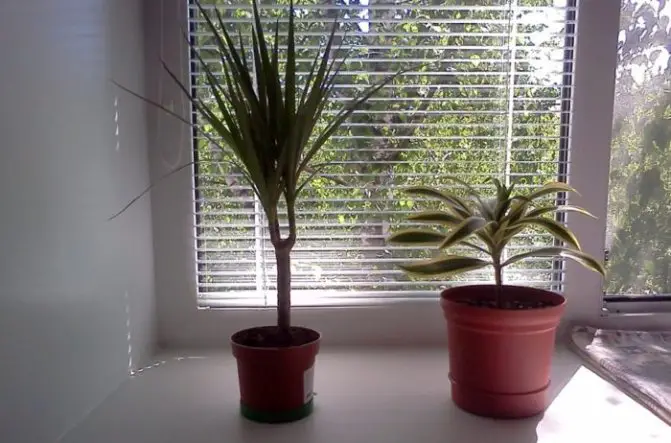Long-term flowering indoor plants, agaves, aloes, bulbs, some cacti, oleander, pelargonium, gerbera, etc. need direct sunlight. It is better to put such plants on a well-lit windowsill, so that they do not touch the glass. In this article we will answer do indoor plants need direct sunlight.

do indoor plants need direct sunlight?
The process of photosynthesis is one of the most amazing processes in living nature. For the production of chlorophyll, plants absorb carbon dioxide with the participation of solar energy, which requires quite a lot. With a lack of sunlight, plants begin to wither and may die. Light is especially needed in the spring and summer months, when the life processes of plants are especially vigorous.
Large trees, for example, can live for quite a long time in low light, but its growth form will not change. Such plants include woody ficuses, eucalyptus, hibiscus, avocado, feijoa, etc.
And decorative flowering plants will not bloom in low light conditions.
How do I get more light on my indoor plants?
In winter, it is recommended to keep the windows clean; 10% more light comes in through clean glass.
In summer, it is better to take plants out into the open air. Glass traps ultraviolet rays, which help kill germs and heal plants. For the first time, the plants must be shaded from the midday sun with gauze or newspaper.
What is partial shade for indoor plants?
In partial shade, fuchsia, philodendron, ferns, etc. grow normally. To provide partial shade, plants must be placed under the cover of other, more sun-loving ones, or on windows shaded by trees.
Plants such as ivy, some bromeliads, certain types of ferns, monstera should be kept as far away from light sources as possible.
Recommended for you Best silver leaf indoor plants For Home and Gardens.
Should you rotate indoor plants?
Plants located on the windowsill, as a rule, face the light with only one side. Its leaves and stems are drawn to the window. To prevent curvature of the stem, it is necessary to periodically rotate the pot around its axis. As a rule, all indoor plants only face one side of the light source, so be sure to turn them periodically.
It is not recommended to rotate the plant during the period when buds are formed on it.
Do Plants hate being moved?
There are sensitive plants that don’t like reversal. They perceive a change in the position of the incidence of sunlight as a signal of danger, they can drop buds, and sometimes leaves. It is better to put such plants as cacti, azalea, camellia in exactly the same position in which they usually stand.
What direction window is best for plants?

South window . No further than 50 cm from the window – cacti and other succulents, pelargoniums. A place no closer than 50 cm from the south window is suitable for many flowering and some decorative leafy indoor plants.
The southeast and southwest window is best suited for open-space dwellers such as succulents, many bulbous plants (Hawortia, Gasteria, Euphorbia, rose, tuberous begonias, most cacti, aloe, hippeastrum, valotta, zephyranthes, eukomis) …
The west and east window is suitable for most indoor plants. The windowsill will be comfortable for many flowering and some decorative leafy indoor plants. Also achimenes, caladium, arrowroot, bougainvillea, peperomia, balsam, some tradescantia, callisia, centlolia, Kalanchoe, many begonias will feel good.
Windows facing north-east, north-west . Plants can be placed near such windows that do not need sun all day long, such as vines, which live in conditions of significant shade.
North window . Only a few of the ornamental plants can adapt to low light conditions: aglaonema, asplenium. These conditions will also work for most ferns. However, decorative flowering plants will not bloom under such light conditions.
How many hours of daylight do plants need?
For active growth, most plants need 12-16 hours a day of natural or sufficiently bright artificial lighting.
However, to stimulate the flowering process, different plants need a different amount of light per day. There are long day, short day and neutral plants.
Neutral plants begin to bloom if they get enough light for several weeks (fairly bright light 12-14 hours a day).
Long-day plants form an ovary and bloom if they receive 13 to 15 hours of light per day for several weeks
In plants of a short day, ovaries and flowers appear only if they receive a strictly defined amount of light for 8-10 weeks: 12, 13 or 14 hours. In winter, the amount of sunlight is low, but it will be enough for short-day plants such as poinsettia to bloom.
For some plants, for example Kalanchoe, Decembrist cactus, chrysanthemums, to stimulate flowering, a strictly defined number of light hours and the correct alternation of day and night are required. If you regularly turn on electric lights, interrupting the night sleep of these plants, then they may not bloom.
Also, plants don’t bloom unless they get their daily minimum. Artificial lighting can be used for such plants.
Check it out how often to water indoor plants in winter?
Will artificial light help plants grow?
Artificial lighting is used: if the plants are in conditions of insufficient sunlight: in the corners of rooms with windows to the north, in rooms with blinds and thick curtains;
- to stimulate the flowering of some flowering plants, for example, uzambara violets;
- for the cultivation of such colorful plants as begonias, bromeliads;
- to support the growth of plants that do not require a period of winter dormancy.
- In winter, using artificial lighting in winter, you can lengthen the day so much that plants of a short day will begin to bloom.
- For most indoor plants, ordinary fluorescent lamps are fine, and incandescent lamps are not effective for artificial lighting purposes.
- Artificial light usually lasts 8-12 hours, although flowering plants may require up to 18 hours of light for bud formation and development.
What happens when plants don’t get enough light?
- Leaves are smaller and paler than usual
- Little or no flowers in flowering species
- The lower leaves turn yellow, dry up and fall off (Do Indoor Plant Leaves Turning Yellow And Brown)
- Lack of growth or elongated stems with very long internodes
- The variegated leaves turn green
What happens if a plant has too much light?
- Brown or gray burn spots
- Leaves droop during the day
- Leaves of shade-loving plants shrivel and die off
Do dormant plants need light?
In winter, the plants enter a period of relative dormancy. Most plants slow or stop growing, so the need for sunlight is minimal.
The resting period lasts from three to four months.
Summery
So we are hopefull that you got your answer to do indoor plants need direct sunlight and many of the related question. if you have any other question please ask in comment section.
